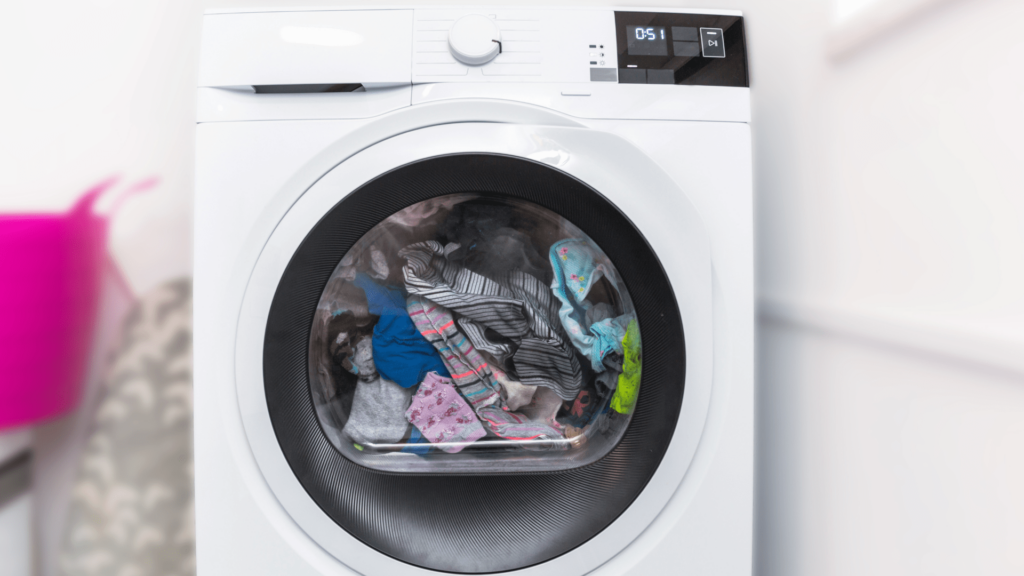Appliance Tip of the Week...
Why Is My Electric Dryer Overheating?

You may be surprised to learn that the air temperature inside an electric dryer can get up to 160° Fahrenheit (71° Celsius) during operation. That's pretty hot, but the dryer’s heating element has the potential to make the circulating air even hotter which can damage your clothes as well as the appliance itself. This is why the dryer has thermostats to monitor the air temperature along with the temperature of the heating element and its housing. These components will assist in cycling the element on and off to maintain a suitable amount of heat.
Of course, sometimes these components can fail resulting in the appliance getting too hot. If you suspect your electric dryer is overheating, we have five likely causes you should investigate. But first, let's review how an electric dryer heats up and how that heat is controlled.
How an electric dryer heats up
Electric dryer models use a heating element to heat the air being circulated through the spinning drum to dry the laundry. The heating element is activated when it receives 240 volts of alternating current through two legs of voltage, each carry 120 volts. The timer or electronic control, heat selector, and start switch on the dryer control panel allow the first leg of voltage to carry the current to the motor, and, depending on the model, through a cycling thermostat, high-limit thermostat, and thermal cut-off fuse on its way to the heating element. The second leg of voltage carries the current through a switch on the motor which closes when the motor is running. The current is then sent to the opposite side of the element. Once both legs of voltage reach the element, the circuit is closed, and the element begins to heat the air.
Dryers with a timer will use a cycling thermostat to monitor the air temperature
For dryers using a timer, a cycling thermostat will monitor the air temperature in the blower housing. When the proper temperature is reached, the thermostat will shut off voltage to the heating element. If the air temperature begins to cool, the contacts in the cycling thermostat will close, allowing voltage to reach the heating element which turns back on to warm the air.
Dryers with an electronic control will use a thermistor to monitor the air temperature
If the dryer has an electronic control, a thermistor usually located on the blower housing will monitor the air temperature and send a signal to a relay on the control board to cycle the heating element on and off. In addition to a thermistor or cycling thermostat, dryers will also use a high-limit thermostat and thermal cut-off fuse to monitor the temperature of the element and its housing to ensure the dryer doesn't overheat.
The most likely causes of a dryer overheating
So what should you do if your electric dryer keeps overheating? Here are the five potential causes you should troubleshoot:
Electric Dryer Overheating? Top 5 Reasons Video Helps

OEM Repair and Maintenance Parts


Related Linksjeff sr.
Why Is My Electric Dryer Overheating?

You may be surprised to learn that the air temperature inside an electric dryer can get up to 160° Fahrenheit (71° Celsius) during operation. That's pretty hot, but the dryer’s heating element has the potential to make the circulating air even hotter which can damage your clothes as well as the appliance itself. This is why the dryer has thermostats to monitor the air temperature along with the temperature of the heating element and its housing. These components will assist in cycling the element on and off to maintain a suitable amount of heat.
Of course, sometimes these components can fail resulting in the appliance getting too hot. If you suspect your electric dryer is overheating, we have five likely causes you should investigate. But first, let's review how an electric dryer heats up and how that heat is controlled.
How an electric dryer heats up
Electric dryer models use a heating element to heat the air being circulated through the spinning drum to dry the laundry. The heating element is activated when it receives 240 volts of alternating current through two legs of voltage, each carry 120 volts. The timer or electronic control, heat selector, and start switch on the dryer control panel allow the first leg of voltage to carry the current to the motor, and, depending on the model, through a cycling thermostat, high-limit thermostat, and thermal cut-off fuse on its way to the heating element. The second leg of voltage carries the current through a switch on the motor which closes when the motor is running. The current is then sent to the opposite side of the element. Once both legs of voltage reach the element, the circuit is closed, and the element begins to heat the air.
Dryers with a timer will use a cycling thermostat to monitor the air temperature
For dryers using a timer, a cycling thermostat will monitor the air temperature in the blower housing. When the proper temperature is reached, the thermostat will shut off voltage to the heating element. If the air temperature begins to cool, the contacts in the cycling thermostat will close, allowing voltage to reach the heating element which turns back on to warm the air.
Dryers with an electronic control will use a thermistor to monitor the air temperature
If the dryer has an electronic control, a thermistor usually located on the blower housing will monitor the air temperature and send a signal to a relay on the control board to cycle the heating element on and off. In addition to a thermistor or cycling thermostat, dryers will also use a high-limit thermostat and thermal cut-off fuse to monitor the temperature of the element and its housing to ensure the dryer doesn't overheat.
The most likely causes of a dryer overheating
So what should you do if your electric dryer keeps overheating? Here are the five potential causes you should troubleshoot:
- Shorted heating element – The first thing you should do is examine the source of the heat – the heating element itself. If the element is partially shorted out, it can produce heat continuously, even after the appliance has reached the proper drying temperature. You can use a multimeter to help determine if the element has shorted by contacting one meter lead to an element terminal and the other lead to the element casing. If the multimeter display indicates there is electrical continuity between either of the element terminals and the metal casing, the heating element has shorted and will need to be replaced with a new one.
- Air flow problem – If the heated air can't be vented out of the dryer efficiently, the appliance can overheat. This will happen if the drye's venting is clogged with lint or other debris which restricts the air flow. You should always clean out the lint filter after every load to prevent lint buildup, but mark the calendar to remind yourself to use a vent brush to fully clean out the length of the dryer's venting at least once a year. You should consider using a vacuum cleaner with a suitable attachment to regularly clean out the dryer's lint filter housing as well.
- Obstructed blower wheel – The dryer's blower wheel works with the motor to draw air into the drum as it’s rotating. If the wheel is obstructed by lint or a small article of clothing (toddler's socks are a common culprit), the air flow will become restricted and result in the dryer overheating. By removing a front or rear panel and, potentially, vent housing, you can inspect the blower wheel for an obstruction. If the wheel appears damaged, stripped, or jammed, you should replace the component.
- Defective cycling thermostat – As noted earlier, dryers with a timer will use a cycling thermostat to monitor the air temperature in the blower housing. The contacts in the thermostat will open when the proper level of heat is reached to interrupt the voltage being sent to the heating element. When the temperature drops back down, the thermostat contacts will close to restore the flow of voltage to the element when more heat is needed. If the thermostat is defective, it may allow the heating element to stay on too long and overheat the air. You can use a multimeter to test the thermostat for electrical continuity to help determine if the part requires replacement. While the cycling thermostat contacts should be closed at room temperature, allowing for continuity, the contacts should open, and show no continuity, when heated.
- Worn drum felt seal – Most dryers will have a felt seal attached to the front and rear rims of the drum to help prevent the heat from escaping the drum. If a seal is worn out or missing the heated air may not be drawn through the drum properly which can cause the dryer to overheat. As possible causes go, this one is not very common, so you should confirm the other more likely defective parts are functioning properly before replacing a felt seal.
Electric Dryer Overheating? Top 5 Reasons Video Helps

OEM Repair and Maintenance Parts

Related Linksjeff sr.



